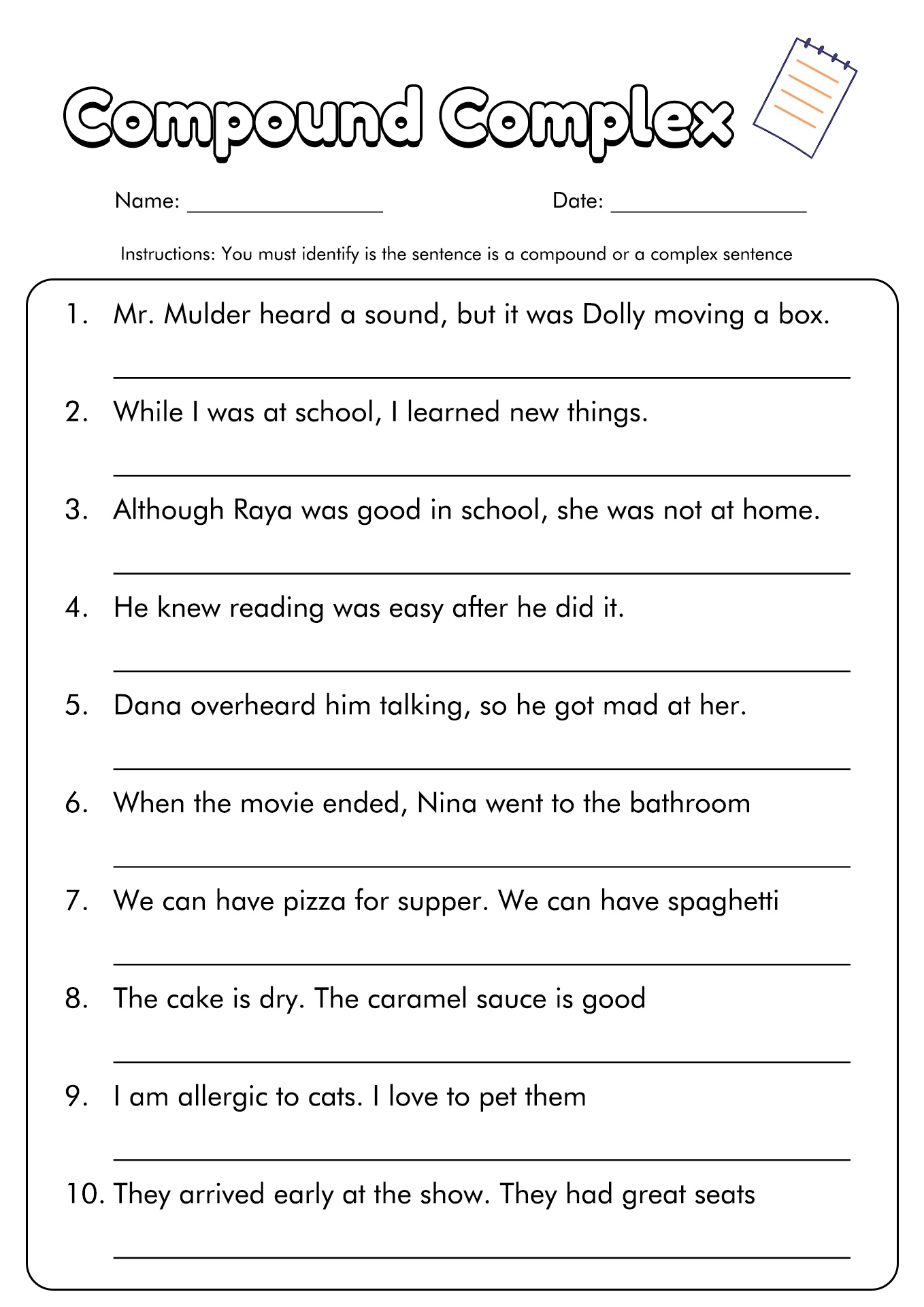Compound and complex sentences are important components of writing that help to convey more complex ideas and information. By understanding the differences between these two types of sentences, writers can enhance the clarity and sophistication of their writing.
Compound sentences consist of two independent clauses joined by a coordinating conjunction, such as “and,” “but,” or “or.” These clauses can stand alone as separate sentences, but when combined, they create a more complex sentence structure that adds depth and variety to the writing.
Compound and Complex Sentence
Complex sentences, on the other hand, contain an independent clause and one or more dependent clauses. The dependent clause cannot stand alone as a complete sentence and relies on the independent clause for context and meaning. By incorporating dependent clauses, writers can provide additional information, clarification, or emphasis within a sentence.
For example, in the sentence, “Although it was raining, we decided to go for a walk,” the dependent clause “Although it was raining” adds context to the independent clause “we decided to go for a walk.” This combination of clauses creates a more nuanced and sophisticated sentence structure.
Compound and complex sentences can be combined to create even more intricate and engaging writing. By incorporating both types of sentences, writers can vary the length and structure of their sentences, leading to a more dynamic and engaging writing style.
Overall, understanding compound and complex sentences is essential for effective communication and writing. By mastering these sentence structures, writers can convey their ideas more clearly and persuasively, creating a more engaging reading experience for their audience.
In conclusion,
Compound and complex sentences play a crucial role in enhancing the complexity and sophistication of writing. By incorporating these sentence structures into their writing, writers can create more engaging and nuanced prose that effectively conveys their ideas and information.
